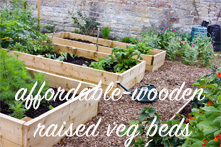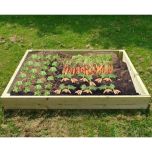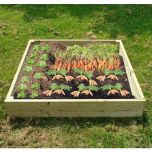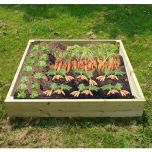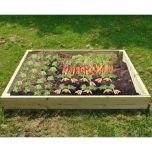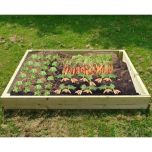- Garden Paradise
- Gardening
- 19 Feb 2025
-
67views
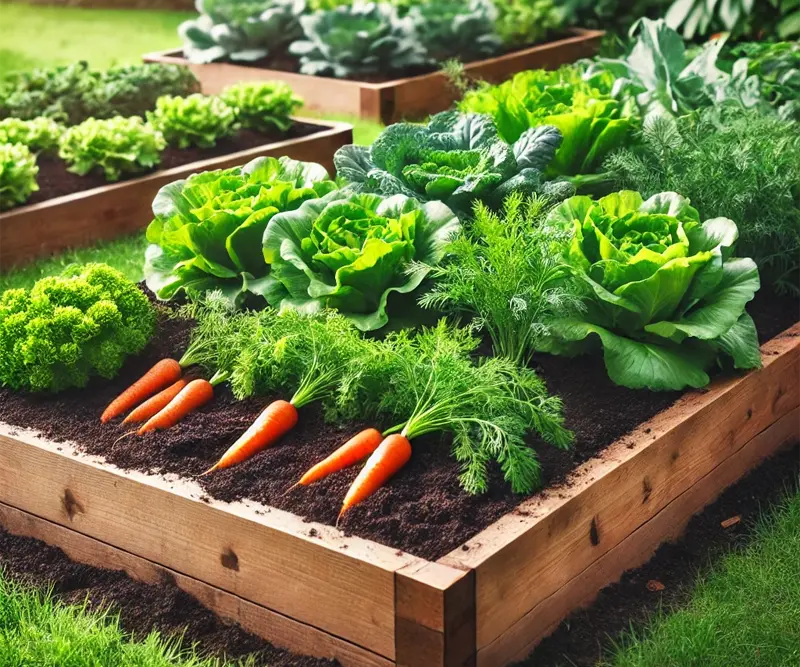
As the growing season approaches, now is the perfect time to prepare your vegetable beds for a bountiful harvest. Whether you have a compact 1m x 1m bed or one of our larger 2m x 1m veg beds, proper preparation is key to healthy plants and an abundant yield. Here’s a step-by-step guide to getting your veg beds ready for the season ahead.
1. Clear Out Old Growth and Weeds
If you haven’t already done so, start by removing any leftover plant debris from the previous season. Old stems, roots, and fallen leaves can harbour pests and diseases. Pull out weeds, making sure to get the roots to prevent regrowth. If you spot any invasive weeds, consider using a hand fork to loosen and remove them completely.
2. Check and Improve Soil Structure
Healthy soil is the foundation of a successful vegetable garden. If your soil has become compacted over winter, gently loosen it using a fork or a hand cultivator. Avoid deep digging, as this can disrupt beneficial soil organisms. Instead, aerate the top 15-20cm to allow roots to penetrate more easily and improve drainage.
3. Add Organic Matter
Enrich your soil with organic matter such as well-rotted compost, manure, or leaf mold. Spread a 5cm layer over the surface and gently mix it into the topsoil. Organic matter improves soil fertility, boosts microbial activity, and enhances moisture retention—essential for strong plant growth.
4. Test and Balance Soil pH
Vegetables grow best in soil with a pH between 6.0 and 7.0. If you haven’t tested your soil before, now is a good time to do so using a simple pH testing kit. If the pH is too acidic, add garden lime; if it’s too alkaline, mix in sulfur or organic materials like pine needles to lower it. Balanced soil ensures that plants absorb nutrients effectively.
5. Plan and Rotate Crops
Crop rotation is vital to prevent soil depletion and reduce the risk of pests and diseases. If you grew tomatoes or brassicas in a bed last season, plant different crops this year. Consider companion planting for natural pest control—marigolds deter aphids, while basil enhances the growth of tomatoes.
6. Set Up Supports and Structures
If you plan to grow climbing vegetables like peas, beans, or cucumbers, install supports such as trellises, stakes, or netting before planting. This prevents root disturbance later and ensures plants have the necessary support as they grow.
7. Mulch and Water Wisely
Applying a layer of mulch, such as straw or bark, helps retain moisture and suppress weeds. As temperatures rise, watering becomes crucial. Install a simple irrigation system or soaker hose for even moisture distribution, helping young plants establish strong roots.
8. Start Planting!
Once your bed is prepared, you can begin sowing seeds or transplanting seedlings. Hardy vegetables like spinach, lettuce, and peas can go in early, while warm-season crops such as tomatoes and peppers should wait until the last frost has passed.
By following these steps, your vegetable bed will be in prime condition for a productive growing season. Happy gardening!




